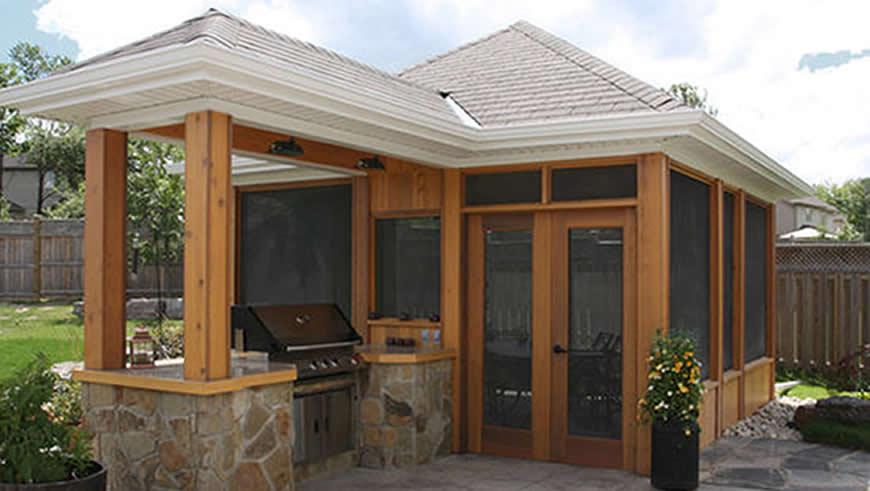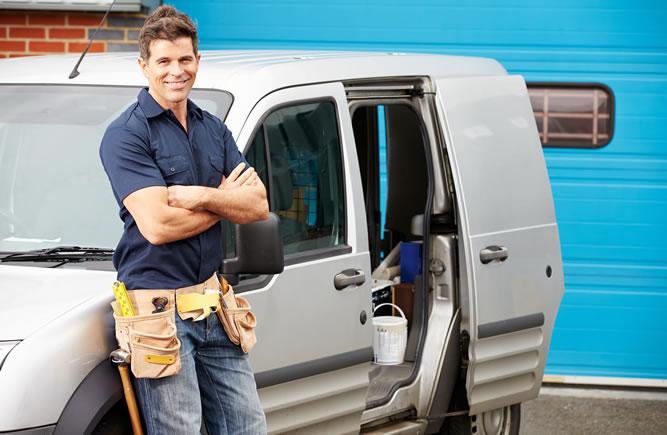Outbuilding Cost
Last updated 22nd May, 2025
What does constructing an outbuilding cost?
If you're thinking of adding a garden outbuilding to your property, maybe a brick summer house or even an office, we've got you covered. This article explains all the essentials for constructing outbuildings. We break down the materials, timeframes, labour fees and much more!
Let's get started below!

Table of Contents
How Much Does an Outbuilding Cost to Build?
Outbuilding costs are highly dependent on the type of space that you're looking to create.
They can be designed for a variety of purposes, but popular uses include gyms, games rooms, offices, sauna cabins, kennels, studios, pool houses, and summer houses.
Let's look at three of the most popular types of outbuildings in the UK:
- Garden office costs typically range between £10,000 and £20,000.
- Summer house costs will be somewhere from £2,500 to £10,500.
- The cost to build a garage is usually between £5,400 and £25,000.
Outbuildings are generally considered more substantial than a simple shed, and will usually have power connected and insulation installed — especially valuable if you're planning to use your outbuilding all year.
Outbuilding costs are usually lower than a house extension, loft conversion, or garage conversion. If you have plenty of room in the garden, then it's a great option to explore!
Also:
The vast majority of outbuildings will fall under Permitted Development rules and should not need planning permission.
Outbuilding Prices
The average material cost to construct an outbuilding will depend mainly on the size and type of building. The average building specialist will usually charge around £150 to £200 per day to build the outbuilding.
The choice of builder will affect the price too, with small, local builders usually being much cheaper than large national companies.
For safety reasons, most builders work in a team with at least 2 members on site at all times. As such, you can expect a daily labour charge of anywhere from £200 to £1000 per day, although this additional cost is usually negated by the speed of completion.
Below are some estimated costs of hiring a specialist to build an outbuilding
| Description | Avg. Cost | Duration |
|---|---|---|
| Concrete garage on a new concrete foundation | £10,000 | 2-3 weeks |
| Basic sauna or steam cabin in garden | £3,000 | 1-2 weeks |
| Small garden office/studio | £10,000 | 2-3 weeks |
| Prefabricated timber summer house (labour-only) | £2,500 | 1-2 weeks |
Note: The outbuilding costs you find in this guide were gathered from a variety of UK sources — directly from various builders around the UK.
But remember: The cost of an outbuilding will depend on the specifics of your situation and what you're after.
Get a quote from local builders for a closer idea of what to expect.
Outbuilding Cost Breakdown Calculator
Individual costs to build a small garden office/studio with uPVC windows and pitch roof: £9000
Materials
£5,400
Tradesmen
£3,150
Waste Removal
£450
Factors That Impact Outbuilding Costs
If planning on using your outbuilding as an office or workspace, you will certainly need an electrician to safely connect to the house mains electricity supply.
The cost of hiring an electrician can vary depending on the job, however, an average hourly rate in the UK is £40 per hour although this can be higher in areas such as London or the South-East.
In addition, you may wish to have a seperate phone line and Internet connection.
If you wish to add a water supply to your outbuilding, or for example install an outside toilet, this will require some substantial work and the assistance of a qualified plumber. On average the hourly rate for a plumber is between £40-£60, although for larger projects they are a likely to offer a day-rate or quote for the complete job.
Larger building companies will be able to integrate all such services and offer an inclusive quote with everything you need. However, most local tradesmen will expect you to take care of these additional services yourself, which means doing some DIY or hiring additional contractors. If you would like a quote from a local tradesperson use the “Get a Quote" button and get up to 3 quotes!
Other variables which will greatly influence an outbuilding cost include the size of the building, the type of roof (a flat roof is much cheaper than pitched), doors (full length bi-folding doors can potentially cost more than the main outbuilding itself), and the choice of all your fixtures and fittings.
Popular Materials for Outbuildings
The type of material you decide to use will impact your outbuilding cost, but is one of the most important decisions. Below we take a look at the pros and cons of some of the most popular.
Wood
Popular for natural looking log cabins, sheds and garden offices.
Pros
- ✔ Natural, rustic look with aesthetic appeal
- ✔ Versatile, suitable for various outbuildings
- ✔ Easy to utilise for numerous designs
Cons
- ✖ Requires regular maintenance to prevent damage
- ✖ Not as durable as alternatives if left untreated
- ✖ Requires additional insulation to prevent heat loss
Timber
An alternative to a simple wood build, timber cladding can be used to a greater extent.
Pros
- ✔ Suitable for modern designs with a natural finish
- ✔ Good insulation, maintaining temperatures
- ✔ Environmentally friendly - renewable material
Cons
- ✖ Can become weathered over time
- ✖ Expensive timber is usually required
- ✖ Needs regular maintenance to avoid decay
Brick
Ideal for permanent outbuildings, such as offices, garages, workshops.
Pros
- ✔ Solid and durable, providing a secure structure
- ✔ Versatile, building can be used for a range of uses
- ✔ Low maintenance as the brickwork requires little upkeep
Cons
- ✖ Initial outlay can be expensive
- ✖ Build can take time to complete
- ✖ Weight requires additional support and foundations
Concrete
Suitable for garages and workshops, when practicality is of more importance than looks.
Pros
- ✔ Incredibly strong and durable, whether resistant and long-lasting
- ✔ Virtually maintenance free, no ongoing treatments required
- ✔ Fire-Resistant, adding further safety to workshops
Cons
- ✖ Can prove expensive and labour intensive to build
- ✖ Old-fashioned and not very aesthetically appealing
- ✖ Lack of insulation can require additional materials
Outbuilding Ideas
Outbuildings come in a wide array of shapes and sizes, and if you don't have something specific in mind already, it can be tricky to be decisive about exactly what your project should look like. Take a look at some of these common types and styles of outbuilding and see what inspires you.
Insulated Garden Office
If you or a family member benefit from the explosion of remote working opportunities in recent years, a garden office can be hugely convenient, not just to help keep your work and family life separate (yet conveniently close!), but also to free up space and declutter the rest of your home. Insulation will ensure that the place is comfortable to work in all year round, but of course you can up- or downscale this project to suit your budget.
Gazebo
Adding a gazebo to your property can certainly bring some gravitas and character, and makes for a fantastic place to host events or just enjoy some quiet chill out time. You can go super elaborate or relatively minimalist in style with this one, whichever works best for you.
Wooden Cabin
A small wooden cabin can add a real touch of class to your property and can be creatively designed to match your style. They also benefit from being highly versatile, being easily adapted to hang-outs, dining areas, and office work.
Contemporary Studio
Another versatile option, a studio is defined largely by being a relatively open indoor space that can be used for gym equipment, fitness activities, or even recording music and podcasts if that's your style!
DIY Outbuilding - Can I Do It Myself?
A DIY build for basic outbuildings, particularly prefabricated buildings, is quite possible - especially with the introduction of affordable and prefabricated kits. While there's no specialist equipment required, you will definitely need some help, although this can potentially be in the form of a willing friend!
Prior to getting started, it's important to plan out the work in advance. First of all, establishing a design will help estimate costs, while it's also recommended to check with your local council if any planning applications or building permits are required.
The foundation is probably the most difficult part of the job for a DIY enthusiast, but a concrete foundation is essential for the durability of the building. It makes sense to get a professional to lay the foundations, before you start on going about your outbuilding as a DIY project.
You will also need to consider materials to use and any tools or equipment you may need to purchase. Then there's installing utilities as well as adding those finishing touches.
Be mindful of the time of year you plan to build, as the cold and wetter months can delay the process or make it harder or potentially dangerous to carry out the work.
What Should I Be Aware Of?
Most of the problems with outbuildings are caused by trying to cut costs, usually by cutting corners. Use a proper foundation, get a professional builder to erect the structure, and if a timber building have it treated/painted regularly to avoid damp and rot - anything less will likely just cost you more in the long run!
Another area which can catch some people out is the site access requirements. When buying a prefabricated kit always check the sizes to ensure the sections will fit through the gate! Also be aware that builders will charge extra if there's no easy access and they have to transport materials through the house to reach your back garden.
As with any DIY project, if there's ever any doubt then it's never too late to call in the experts. Even if you're confident with the majority of the physical work, it is always worth hiring a professional for specialist areas.
FAQs
If your outbuilding has its own power supply, you might be able to use a powerline adapter, which uses the power line to transmit the wifi signal.
If these options aren't suitable, there are professionals who can assist, so never fear, you'll get that stable signal one way or another!










